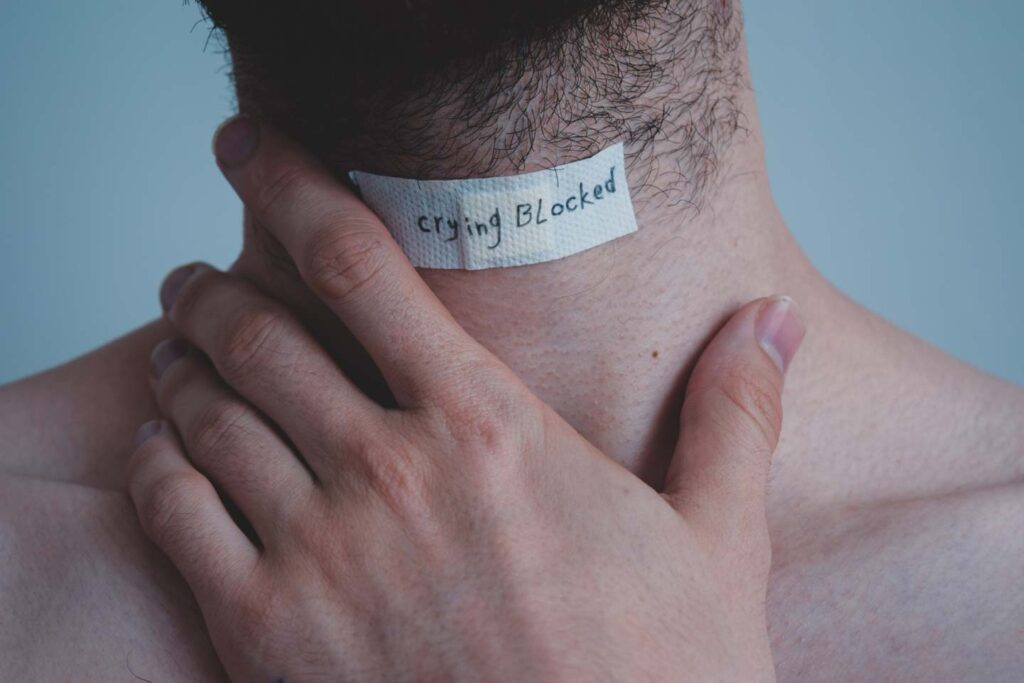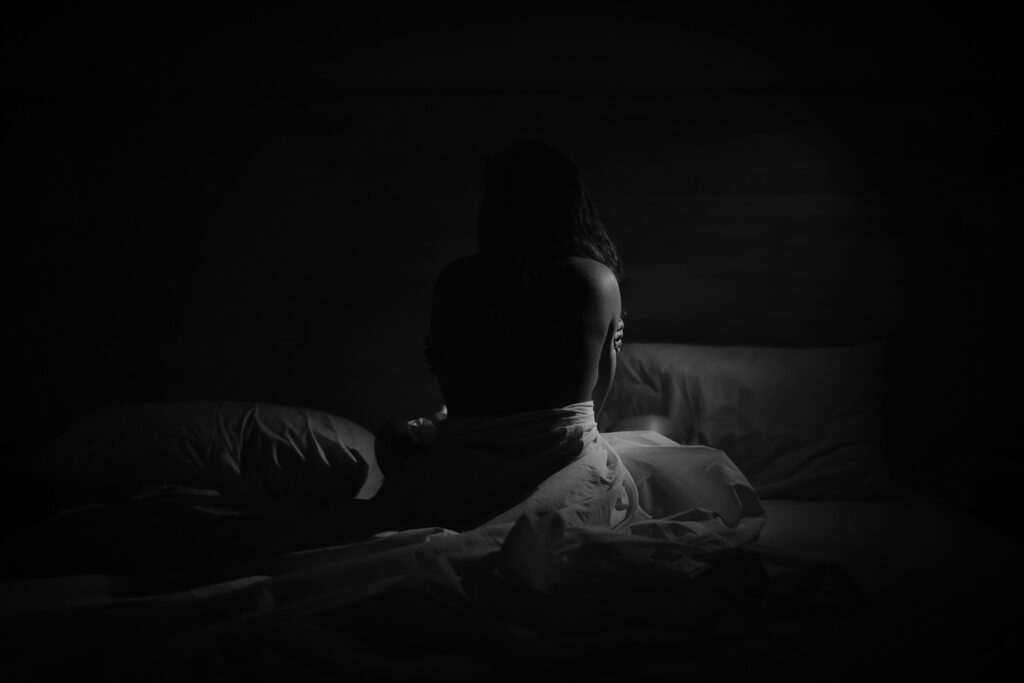In today’s world, the emphasis on physical appearance has grown to unprecedented levels, driven by the pervasive influence of media as well as social platforms. Although it’s common for people to worry about their looks, some people have an intense and disturbing obsession with their perceived imperfections, which can result in body dysmorphia or body dysmorphic disorder (BDD), a mental health problem.
We will go into the complexities of body dysmorphia in this post, looking at its signs, how to diagnose it, and several ways to treat it so that those who are affected can live happier as well as healthier lives.
Table of contents:
- Body Dysmorphia
- Symptoms of Body Dysmorphia
- Diagnosing Body Dysmorphic Disorder
- Potential Triggers
- Treatment Methods
- Body dysmorphia’s effects
- Coping techniques for those with Body Dysmorphia
- Conclusion


Body Dysmorphia
A psychiatric condition known as body dysmorphia is defined by an obsessive obsession with one’s perceived physical flaws or shortcomings. People who suffer from this condition have mistaken perceptions of their bodies, which cause them to see themselves differently than others do. To the person with BDD, these perceived flaws may appear insignificant or nonexistent to others, but they can quickly consume and disturb them.
You might also be interested in: The Role of Erotic Massage Therapy in Self-Care and Mental Health
Symptoms of Body Dysmorphia
It’s crucial to recognise the signs of body dysmorphia to diagnose the disease and quickly seek treatment. The following are some typical signs of body dysmorphia:
Fixation on physical imperfections
Body dysmorphic individuals obsess over particular features of their appearance that they perceive as faulty or abnormal. Their complexion, hair, nose, weight, as well as any other feature of their body, could be the source of these faults.
Excessive checking or grooming
Body dysmorphic people frequently groom themselves excessively or continuously check their appearance in mirrors to cover up or correct their perceived defects.
Social isolation
People with BDD may withdraw from social contacts and avoid circumstances that can highlight their perceived shortcomings as a result of the distress that their appearance concerns bring.
Low self-esteem
Body dysmorphia can have a considerable negative impact on a person’s sense of self-worth and even self-esteem, which can result in feelings of shame as well as inadequacy.
Behaviour of avoidance
People who struggle with body dysmorphia may shy away from activities or occasions that can highlight their perceived imperfections, depriving them of valuable life experiences.


Diagnosing Body Dysmorphic Disorder
A mental health expert, such as a psychiatrist or psychologist, must conduct a thorough evaluation to diagnose body dysmorphic disorder. A complete assessment will normally be performed by the clinician, which may include the following:
1. Clinical consultation
To comprehend the person’s ideas, feelings, and behaviours about their concerns about their looks, the mental health professional will talk with them.
2. Body dysmorphia assessment
The Body Dysmorphic Disorder Questionnaire (BDDQ), among other standardised tests, may be used to aid in the diagnosis. These tests can be used to evaluate the intensity of symptoms as well as pinpoint problem areas.
3. Multiple diagnoses
To ensure a precise diagnosis, the clinician will rule out other problems with comparable symptoms, which might include eating disorders, social anxiety disorder, as well as obsessive-compulsive disorder.


Potential Triggers
Bullying, traumatic events, or significant changes in one’s lifestyle can all serve as triggers for the start or worsening of body dysmorphia. Knowing these triggers can help in developing treatment plans that are specific to the underlying problems.
Effect on body image satisfaction
People with body dysmorphia often have a deep dissatisfaction with their looks, and they may feel this way about a variety of different body parts or physical characteristics. Treatment strategies can be guided by an understanding of the complexity of poor body image.
Treatment Methods
CBT or cognitive behavioural therapy
The most effective treatment for body dysmorphia is cognitive-behavioural therapy (CBT). CBT enables people to recognise and question false thoughts as well as beliefs about their appearance. They learn to replace destructive thought patterns with more rational and helpful ones through cognitive restructuring. Techniques for exposure and response prevention (ERP) are frequently employed to lessen avoidance behaviours associated with worries about appearance.
Treatment possibilities
When co-existing illnesses like depression or anxiety are present, doctors may occasionally prescribe medication to treat the symptoms of body dysmorphia. The most frequently prescribed drugs for body dysmorphia are selective serotonin re-uptake inhibitors (SSRIs), as they might lessen symptoms as well as elevate mood.
Exposure and Response Prevention (ERP)
This particular form of cognitive behavioural therapy (CBT) aims to expose patients to circumstances that make them feel self-conscious about their bodies and to stop the compulsive behaviours they employ to cope with anxiety. People with BDD can learn to effectively manage their symptoms by embracing their concerns and restraining the impulse to do rituals (such as excessive grooming or mirror checking).
Group therapy
Joining a support group can be helpful because it gives people with BDD a secure place to share their experiences, gain understanding from others, and pick up tips from people who deal with similar issues.
Family therapy
Involving family members in therapy can be beneficial since it fosters better relations between them and the person who has body dysmorphia and fosters their understanding as well as support.
Acceptance-based therapies and mindfulness
Instead of attempting to control or conceal their thoughts and feelings, these therapies teach patients how to accept them. This can be especially useful for handling anxiety caused by concerns about one’s body image.
Self-Help materials
For people struggling with body dysmorphia, there are self-help books, online resources, as well as groups that can provide helpful advice.
Keep in mind that the treatment is customised, and the particular strategy may change based on the degree of symptoms as well as the person’s particular needs. A proper evaluation and individualised treatment plan require consultation with a licensed mental health expert. With the appropriate support and care, recovery is achievable.


Body dysmorphia’s effects
Body dysmorphia can have a significant impact on many facets of a person’s life, including:
1. Personality disorder
High levels of anxiety, despair, and a sense of hopelessness are brought on by the persistent preoccupation with perceived imperfections.
2. Inability to function
Distress and obsession can obstruct daily tasks, interpersonal interactions, and professional or academic progress.
3. Growth of compulsive behaviours
People with body dysmorphia frequently engage in obsessive behaviours, such as excessive grooming, mirror checking, as well as seeking reassurance, to lessen distress. These actions can quickly add up in time and cause disruptions in daily living.
4. Impact on satisfaction with one’s body image
Body dysmorphia has a detrimental impact on a person’s contentment with their appearance. They are unable to appropriately perceive their look due to their continual concentration on perceived imperfections, which causes them to feel unhappy as well as unsatisfied with their appearance.
5. Anxiety and depression
Body dysmorphia frequently coexists with anxiety and depressive disorders. Hopelessness and worried thoughts may be made worse by the condition’s distress as well as disability.
6. Social withdrawal
Many people with body dysmorphia stay away from social settings out of concern that others will condemn them for their appearance.
7. Self-harm or suicide risk
Severe cases of body dysmorphia may be linked to a higher risk of self-harm as well as thoughts about suicide.
8. Academic and professional impairment
A person’s ability to focus on the job or academic duties might be hindered by their preoccupation with perceived defects, which can lower productivity and affect performance.
9. Abstaining from activities
People who struggle with body dysmorphia may refrain from engaging in once-enjoyed pastimes or going to social gatherings that may bring attention to their looks.
10. Relationship difficulties
The obsession with looks can cause relationship problems since the person may have trouble building close bonds with others and sustaining meaningful interactions due to their extreme self-focus.
11. Test for body dysmorphic disorder and body dysmorphia
People who struggle with body dysmorphia frequently look to others for comfort or may feel pressured to complete online body dysmorphia tests to determine their condition. However, a skilled mental health expert’s professional evaluation, as well as diagnosis, should not be replaced by these exams.


Coping techniques for those with Body Dysmorphia
Professional treatment is necessary, however, people with body dysmorphia can also effectively manage their symptoms by incorporating coping mechanisms into their daily lives:
Self-compassion
Developing a more positive self-image and combating self-critical attitudes might help lessen the impact of perceived imperfections.
Limiting Mirror Time
Cutting down on the amount of time spent staring in the mirror will help break the habit of constant inspection as well as self-conscious thinking.
Keeping away from triggering environments
Limit your exposure to social media and other settings that uphold distorted ideas of beauty and foster emotions of inadequacy.
Use of relaxation techniques
Utilising relaxation methods like deep breathing exercises or mindfulness can help control anxiety as well as distress.
Educating family members
Making friends and family more knowledgeable about body dysmorphia can result in a network that is more accepting and helpful.
Body Dysmorphia in Men
Despite being frequently associated with women, a large percentage of men also experience body dysmorphia. Men, meanwhile, may be less likely to seek assistance or share their concerns because of societal expectations and established gender norms.
Body Dysmorphia in children and adolescents
It might be difficult to recognise body dysmorphia in children and adolescents because concerns about appearance are frequent at this developmental time. But a serious and continuous fixation with defects that interferes with day-to-day functioning may call for a professional assessment and help.
Body positivity and acceptance
Body dysmorphia’s effects on people and society at large can be lessened by promoting body acceptance and body positivity. A more welcoming and encouraging environment can be created by celebrating different body types and questioning social beauty standards. Body dysmorphia is a complicated and varied mental health problem that calls for ongoing study, knowledge, and empathy to properly treat sufferers. By becoming more knowledgeable, we may improve our ability to spot its symptoms, offer sympathetic support, and seek to lessen the stigma associated with both mental health difficulties and body image issues.


Conclusion
A person’s well-being and quality of life can be greatly impacted by body dysmorphia, a complicated mental health disorder. For an accurate diagnosis and successful treatment, it is essential to recognise the symptoms and seek professional assistance.
People with body dysmorphia can take charge of their life, change their self-image, and move toward a healthier, happier future through a holistic strategy that includes therapy, medicine, and coping mechanisms. Keep in mind that healing is achievable with the correct help and willpower.
